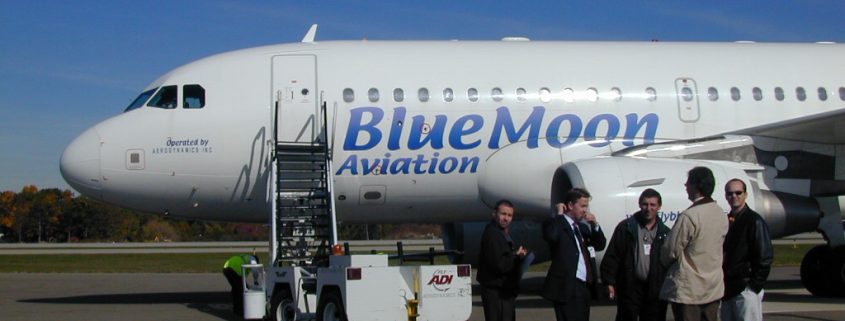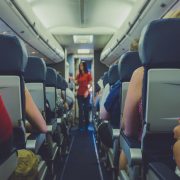The Director of Safety and their safety culture influence
The Director of Safety and their safety culture influence.
In the United States, each part 121 certificate holder must have a Director of Safety as required by 14 CFR §119.65 – Management personnel required for operations conducted under part 121 of this chapter. The Director of Safety plays an important role in setting the overall compliance philosophy at the airline. Although all airlines are required to have a safety management system program in place, and there is no question to the value of the Safety Management System (SMS) program properly functioning at an airline, the SMS program may not fully change everyone’s behavior or attitude with regard to performing at the highest standards of safety. This is where the Director of Safety can set the tone and trajectory of the airline towards maintaining a highly compliant, proactive safety operation in all departments.
I’ve been in aviation since 1991, starting my career as a flight attendant. I went on to become an Assistant Purser on the 747, became an air transportation supervisor/aircraft ground instructor, then in 2000, I worked for Saudi Aramco Oil in their aviation department in Dhahran, Saudi Arabia. Next, in 2004 I was hired as a Director of Inflight. On my first day, I was taken around to meet my new coworkers in all departments. Everyone was cordial and gave a nice welcome, just as I hoped. I had met all key personnel, including executive management, except for the Director of Safety. I got myself settled in my office and started to work on getting familiar with the operation. It was then that I finally got to meet Kris, the Director of Safety. He came up to the doorway but never came inside.
“I want you to know that working here, we are compliance plus. We aim to exceed requirements wherever possible. This is how we are.”
He then turned and walked away. That was it. That was my introduction to the Director of Safety and the compliance philosophy of the airline back in 2004. I sat there for a few seconds taking in what he had just said. I didn’t even get to introduce myself or share any of my background. He let me know from the first day exactly how they operate and their expectations of me with regard to safety and compliance as their new Director of Inflight. My mindset was already wanting to do things as best as possible in the interest of safety, so his introduction made it crystal clear about how the overall operation functioned. Although Kris just said what he wanted and walked off, it made a big impact on my perception of the operation and did so really fast.
Having previously worked for an airline that used to paint in huge letters SAFETY FIRST, but didn’t really follow that philosophy, this was a refreshing change to work at a place where safety truly was number one.
Fast forward a few months and we were in the middle of working on an Airbus A319 executive aircraft add-on certification. For those who have worked on aircraft certification, you know how much work goes into preparing for the process and what it takes to get through each phase until completion. If you’ve never worked a certification, let’s just say there’s a lot of intense work, research and hours put into it that must be performed. There are long days, working into the evenings, and continuing work on the weekend to keep up with the schedule of events. It’s a tremendous collective effort throughout the company to bring on a new aircraft type.
At one point during the certification, I remember being told by an FAA Aviation Safety Inspector involved in our certification that they wanted something changed in the flight attendant manual. Going through certification, it’s expected that the FAA will have some comments about the manual. Similar to an author trying to proofread their own work, sometimes there are errors that the author just cannot see because they are too familiar with the content. Sometimes there’s just a difference of opinion.
The Director of Safety was very proactive; fairly regularly he would visit the different management personnel to see how things were progressing, if we had any questions, concerns, or manual interface issues that we might need assistance with coordination. There was one particular comment that was made by the FAA about content inside the flight attendant manual, which I was responsible for, and unfortunately, I can’t remember exactly what that comment was. All that I do remember is talking about it with the Director of Safety. Internally, I was a little bit vocal in my opposition to having to implement this change that the FAA wanted. All I remember about it is that it was not being driven by regulation, it was a procedure the FAA wanted us to have, and I didn’t feel it was appropriate for our operation.
Kris knew of my disagreement and came by to speak with me about my concerns.
We sat at a table outside of my office area and I explained to him all the reasons why I had disagreed with the recommendation from the FAA to change whatever it was. After a few minutes of my going on and on why I felt my position was right and that we should not make the change, Kris then asked me if that was everything I had to say about it. I told him, “for now, at least, yes.” Kris then expressed to me what he thought about my disagreement with the FAA-suggested manual change.
“In the amount of time that you spent arguing why you shouldn’t implement their recommendation, you could’ve made the change in the manual, raised our standards to a higher level, made the FAA happy, and get them to leave you alone on this issue.”
That was the end of the discussion on that topic. I took a few steps back to my office, made the change in the manual, and the revision was submitted with the FAA’s recommendation within it. Never again did the Director of Safety ever have to come back to me and discuss why I didn’t want to make a change. His brief, yet to-the-point introduction to me on day one was the heads-up on how they expected everyone to perform, to the highest degree of safety as possible for our airline. That sit-down talk with me a few months later made it loud and clear that he was serious about what he said and he would hold all of us to task if we missed an opportunity to increase safety, or purposefully resisted making a change, provided it did not negatively impact the operation.
Kris demonstrated to me and everyone else working at that airline that he was a highly knowledgeable, strong, and effective leader as the Director of Safety. He helped set and maintain the compliance philosophy that we were going to operate to the highest standards of safety as best as practicable for our operation, and this was before SMS and process owners being held accountable for their operation became a requirement.
An active and proactive Director of Safety can make a significant, positive difference at the airline by setting the tone of how the airline operates with regard to its attitude toward safety compliance. A Director of Safety with a passive or minimum standards perspective can have a negative impact on the overall operation too. How well does your Director of Safety promote and ensure safety compliance at your operation?





Leave a Reply
Want to join the discussion?Feel free to contribute!